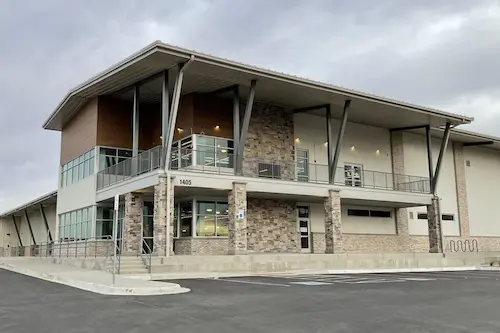Sustainability and Environmental Benefits of Metal Prefabricated Buildings

We are committed to advancing construction practices that are not only innovative but also environmentally responsible.
One area where this commitment shines is in our use of metal prefabricated buildings.
These structures represent a forward-thinking approach to construction that aligns with our sustainability and environmental stewardship goals.
1. Efficient Resource Utilization
Metal prefabricated buildings use materials efficiently. Unlike traditional construction methods, which often generate significant waste, prefabrication allows us to control and minimize the raw materials needed. We construct building components in a factory setting, then transport them to the site for assembly.
As a result, we significantly reduce the excess material that would otherwise be discarded. With precise cutting and assembly techniques, we utilize resources effectively, reducing waste and lowering the environmental impact of the entire process.
2. Durability and Longevity
One of the main environmental benefits of metal prefabricated buildings lies in their durability. These metal structures offer strength and resilience, which results in longer lifespans compared to traditional materials.
Greater durability means fewer repairs and replacements over time. This conserves resources and minimizes the environmental impact linked to maintenance and reconstruction. Moreover, metal resists fire, pests, and harsh weather, further extending the building’s usable life.
3. Recyclability and Reusability
Another significant advantage of metal prefabricated buildings is the recyclability of their components. We prioritize using metals that can be reused or recycled at the end of their lifecycle. This approach ensures that even when a building reaches the end of its use, the materials find new life rather than ending up in landfills.
Recycling metal requires far less energy than producing it from raw ores. This efficiency conserves natural resources and reduces the greenhouse gas emissions associated with metal production.
4. Energy Efficiency
Metal prefabricated buildings also support sustainability through excellent energy performance. Prefabrication techniques often include advanced insulation materials and high-efficiency systems. These structures can meet or exceed strict energy standards, helping to reduce energy use throughout their operational life.
With effective insulation and energy-efficient systems in place, heating and cooling demands decrease—further lowering the building’s energy footprint and overall environmental impact.
5. Reduced Construction Time
The prefabrication process shortens the time required for construction compared to traditional methods. This reduced timeframe brings several environmental advantages. A shorter build reduces on-site energy consumption and emissions from construction equipment.
Additionally, faster construction causes less disruption to surrounding communities and ecosystems, minimizing potential environmental disturbances.
6. Minimal Site Disruption
Metal prefabricated components also help minimize site disturbance. Because most work takes place off-site in a factory, on-site assembly is quicker and requires less heavy equipment.
This process preserves the project site by reducing soil erosion, protecting vegetation, and limiting the need for extensive excavation or grading. It helps maintain the natural landscape and keeps the construction footprint small.
7. Sustainable Building Practices
Milidaro remains committed to sustainable building practices across all projects. Our use of metal prefabricated buildings aligns with our values of environmental responsibility. We focus on selecting low-impact materials, optimizing construction efficiency, and contributing to a greener future.
We also explore innovations in metal building technologies—from advanced materials to new construction methods—to improve sustainability even further.
8. Adaptability and Flexibility
Metal prefabricated buildings provide flexibility that supports long-term sustainability. These structures can be modified or expanded easily to suit evolving needs, avoiding costly and resource-heavy renovations.
Adaptable design extends the building’s lifespan, reduces the need for new construction, and encourages resource conservation. It also allows us to repurpose existing structures efficiently, further lowering the environmental footprint.
Our focus on sustainability and environmental benefits through metal prefabricated buildings reflects our commitment to responsible construction practices. By emphasizing resource efficiency, durability, recyclability, energy performance, and reduced site disruption, we lead by example in developing innovative, environmentally friendly structures.
This dedication ensures that our projects serve today’s needs while supporting a more sustainable future for generations to come.
